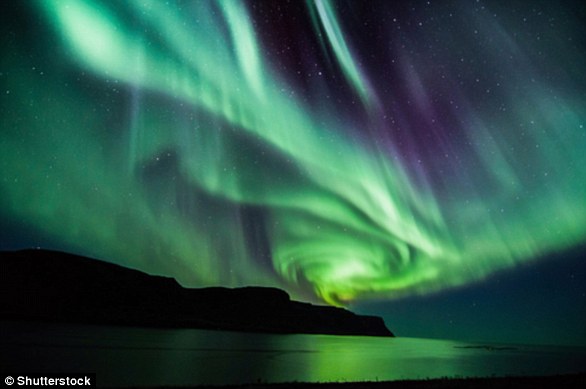Incredible moment TWO of nature’s most amazing phenomena occur side by side: Iceland’s volcanic eruption AND the Northern Lights are captured in once-in-a-lifetime photo
A stunning image has captured the moment two of nature's most astonishing phenomena coexisted.
Iceland's volcanic eruption wasn't the only spectacular event to light up the sky last night, as the Northern Lights also provided an incredible display for passengers on a delayed flight out of the country.
Sophie Molloy, 21, who was traveling back to Manchester after a short holiday with her parents, was lucky enough to witness the remarkable incident and take a unique photo on her phone.
The Lancaster University student said she and her family had only been in Iceland for two days before returning home on Monday. “We definitely got more than we bargained for!” she told MailOnline.
Sharing the stunning photos taken during the flight, she said everyone on the easyJet flight had a chance to enjoy the beautiful scene.
A stunning image has captured the moment two of nature's most astonishing phenomena coexisted
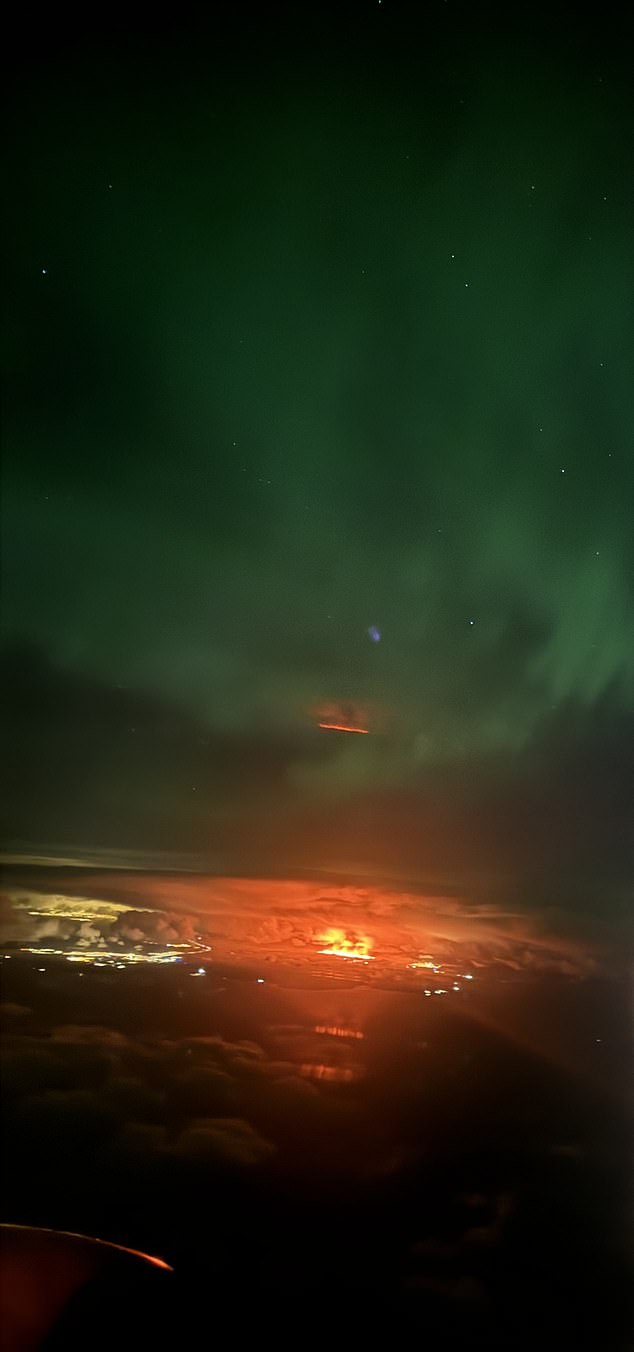
Student Sophie Molloy, 21, took the photos during her flight back to Manchester
'We could see the eruption through the plane windows, those on the right saw it erupt.
“The passengers on the plane were all in good spirits. “It was a nice atmosphere, with the majority of passengers leaving their seats to give others a look,” she said.
“Generally everyone was very calm as it's not something we're likely to experience again!”
Flights from Keflavik International Airport in Reykjavik were delayed last night, including Sophie's plane, which sat on the tarmac for five hours before taking off at 1.35am due to the volcanic activity.
Passengers were told by easyJet: 'We're sorry your flight has been delayed. This is because the volcanic activity in Keflavik (KEF) is causing restrictions in the areas where aircraft are allowed to fly.”
Sophie added that 'part of the delay was due to some passengers not wanting to fly and someone having had a drink.'
She said the flight had originally been delayed by a few hours due to fog in Geneva, adding: “If this had not been the case, we would have missed the eruption completely.”
'After waiting for the plane for an hour, the passengers on the right side of the plane saw the eruption taking place.
'There wasn't much information as you might imagine, although the pilot assured us he was in contact with headquarters.
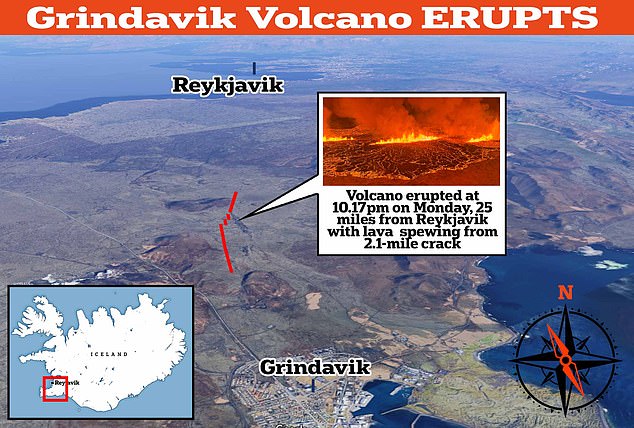
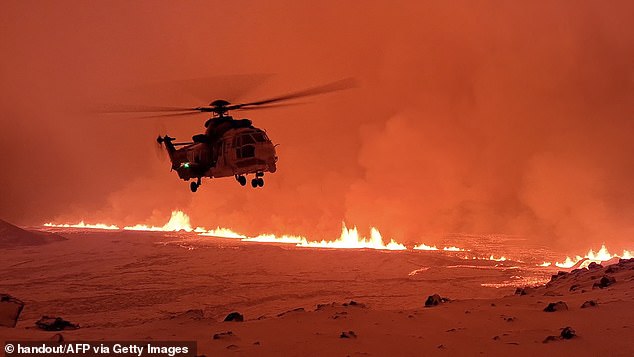
Emergency workers and scientists observe the billowing smoke and flowing lava that turns the sky orange. This handout card from the Icelandic Coast Guard shows them flying over a volcanic eruption on the Reykjanes Peninsula, 3 km north of Grindavik, on Monday evening.
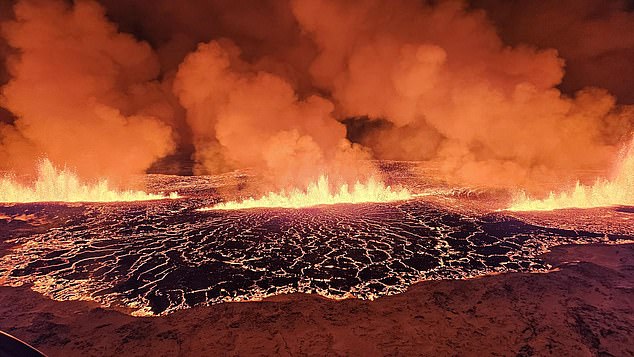
First aerial images of the eruption show nearly three kilometers of lava pouring out of the fissure
She said the flight, which was supposed to depart at 7:55 p.m. on Monday, finally left around 1:35 a.m. on Tuesday.
'Unfortunately, just as we were getting the all clear, some passengers did not feel comfortable flying and left the plane, which is completely understandable. “There were also some Icelandic residents among them,” she said.
Sophie added that the general feeling among passengers was “hoping that everyone in the area would be okay and that there wouldn't be too much damage, especially to local residents.”
Tourists flock to Iceland in the hope of catching a glimpse of an aurora or even an active volcano – and now holidaymakers on their way home have managed to see both incredible sights in one go.
Although stunning images have emerged from the eruption, many residents fear for their homes – with the town of Grindavik in the shadow of the volcano.
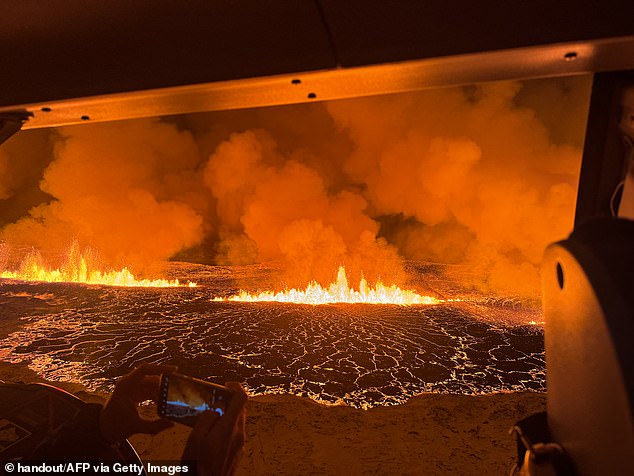
Emergency workers and scientists observe the billowing smoke and flowing lava that turns the sky orange. This handout card from the Icelandic Coast Guard shows them flying over a volcanic eruption on the Reykjanes Peninsula, 3 km north of Grindavik, on Monday evening.
The fishing village has been hit by thousands of earthquakes in recent weeks, forcing the entire population to be evacuated.
The eruption on the Reykjanes Peninsula, just north of the evacuated town of Grindavik, started around 10:17 pm last night after an earthquake swarm, the Icelandic Meteorological Office said, referring to a series of small tremors.
Live-streamed footage of the eruption showed molten lava spewing into the air from cracks in the ground, surrounded by billowing clouds of red smoke.
There are fears the eruption, which sees 200 cubic meters of lava spewing from the fissures every second, could wreak havoc on air traffic after another Icelandic eruption in 2010 grounded thousands of flights across Europe and North America, killing holidaymakers had stranded.

